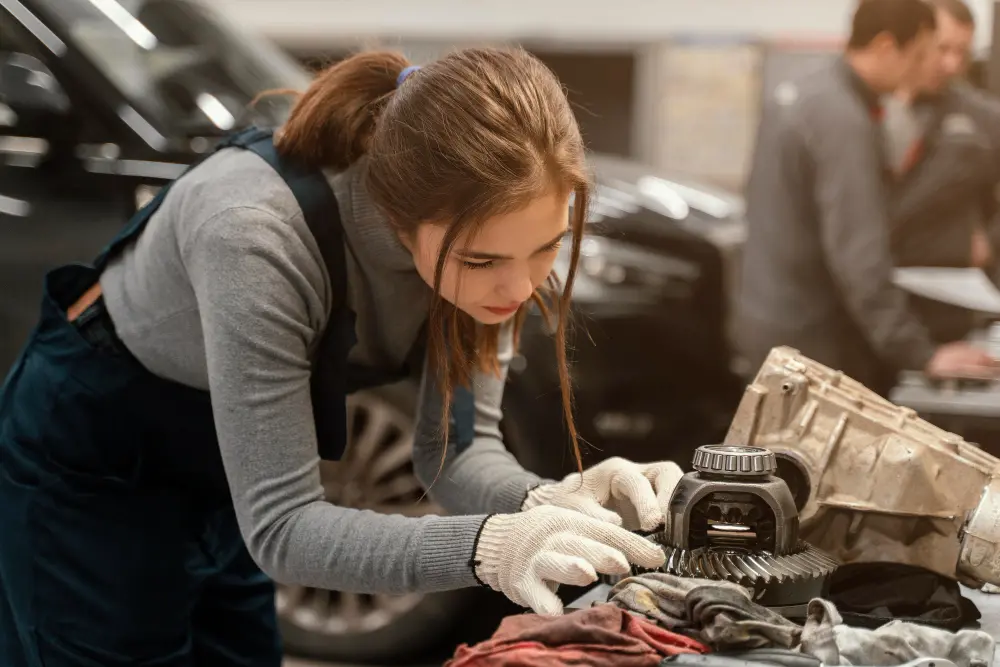Cars have become an integral part of our daily lives. We rely on them to get us to work, drop our kids off at school, and embark on weekend getaways. But just as we take care of our health, our cars need regular attention too. Being proactive about understanding basic car repairs not only saves money but also reduces the chances of getting stranded in the middle of nowhere. Moreover, having a good grasp of essential repairs equips you with knowledge, which can come in handy when you step into a car workshop.
Now, if the idea of popping the hood scares you, don't fret. This guide is designed for the everyday driver, not the seasoned mechanic. By understanding these ten basic car repairs, you can ensure that your vehicle runs smoothly, saving you from frequent visits to the car workshop.
1. Changing the Oil
Oil is the lifeblood of your car's engine. It lubricates moving parts, preventing wear and tear. Over time, this oil can become dirty or low.
Steps:
Ensure the car is on a level surface.
Locate the oil pan and remove the drain plug to let old oil out.
Replace the oil filter.
Pour in new oil using a funnel.
Remember, frequent oil changes based on the car manufacturer's recommendations can extend the lifespan of your vehicle for car maintenance.
2. Replacing Air Filters
Air filters prevent dirt and debris from entering the engine. A clogged air filter can decrease the fuel efficiency of your car.
Steps:
Locate the air filter box.
Open the box and remove the old filter.
Insert the new filter.
Close the box securely.
Swinging by a car workshop can confirm if your air filter needs replacement.
3. Replacing Windshield Wipers
A clear windshield is crucial for safety. Worn-out wipers can impede visibility during rain.
Steps:
Lift the wiper arm away from the windshield.
Push the small tab on the underside of the wiper to slide it off the arm.
Attach the new wiper blade.
A quick trip to your nearest car workshop will have various wiper blade options available.
4. Checking Tire Pressure
Proper tire pressure ensures fuel efficiency and reduces tire wear.
Steps:
Purchase a tire pressure gauge.
Remove the cap from the valve on one tire.
Push the tire pressure gauge onto the valve.
Read the pressure and add air if necessary.
Every car workshop will emphasize the importance of regularly checking tire pressure.
5. Changing Brake Pads
Worn brake pads can affect the braking efficiency and damage the brake rotors.
Steps:
Lift the car with a jack.
Remove the wheel.
Remove the caliper to expose the brake pads.
Replace with new brake pads.
If you're unsure, your local car workshop can guide you on when to replace brake pads.
6. Changing Spark Plugs
Spark plugs ignite the air/fuel mixture in the engine. A bad spark plug can lead to reduced performance and fuel efficiency.
Steps:
Locate the spark plugs.
Remove the wire from the first spark plug.
Use a spark plug socket and ratchet to remove the plug.
Install the new spark plug.
When in doubt, a trip to the car workshop can clarify any spark plug concerns.
7. Replacing a Dead Battery
A car won't start with a dead battery. Knowing how to change one is vital.
Steps:
Open the car hood and locate the battery.
Disconnect the negative terminal followed by the positive.
Lift out the old battery and place the new one in.
Connect the positive terminal followed by the negative.
Always ensure the car workshop tests your battery during regular checkups.
8. Refilling Coolant
Coolant keeps the engine from overheating, crucial for optimal performance.
Steps:
Ensure the engine is cool.
Locate the coolant reservoir.
Open the cap and fill with a 50/50 mix of water and coolant until reaching the fill line.
It's wise to ask your car workshop to inspect the coolant during routine visits.
9. Changing the Transmission Fluid
This fluid lubricates the gears of the transmission, ensuring smooth shifting.
Steps:
Locate the transmission fluid dipstick.
Remove it and wipe it clean.
Insert it back to check the level.
If low, add the appropriate transmission fluid.
Frequent checks at the car workshop can confirm if a change is required.
10. Replacing a Headlight or Taillight Bulb
A blown bulb can reduce visibility and lead to fines.
Steps:
Locate the back of the headlight/taillight.
Unscrew or unclip the bulb holder.
Replace the bulb.
Reattach the bulb holder.
This is another aspect where visiting a car workshop is beneficial for advice.
Conclusion
Cars, like any machine, need maintenance. By equipping yourself with the knowledge of these ten basic car repairs, you can ensure that your car remains in peak condition, saving both time and money. It empowers you to address small issues before they become significant problems. And while understanding the basics is essential, never underestimate the value of professional input. A regular visit to a car workshop will not only confirm your diagnosis but also provide you with the peace of mind that your vehicle is in the best hands. Embrace the art of car maintenance and drive with confidence.
Read More:
7 Basic Car Repairs that Everybody Should Know


No comments yet